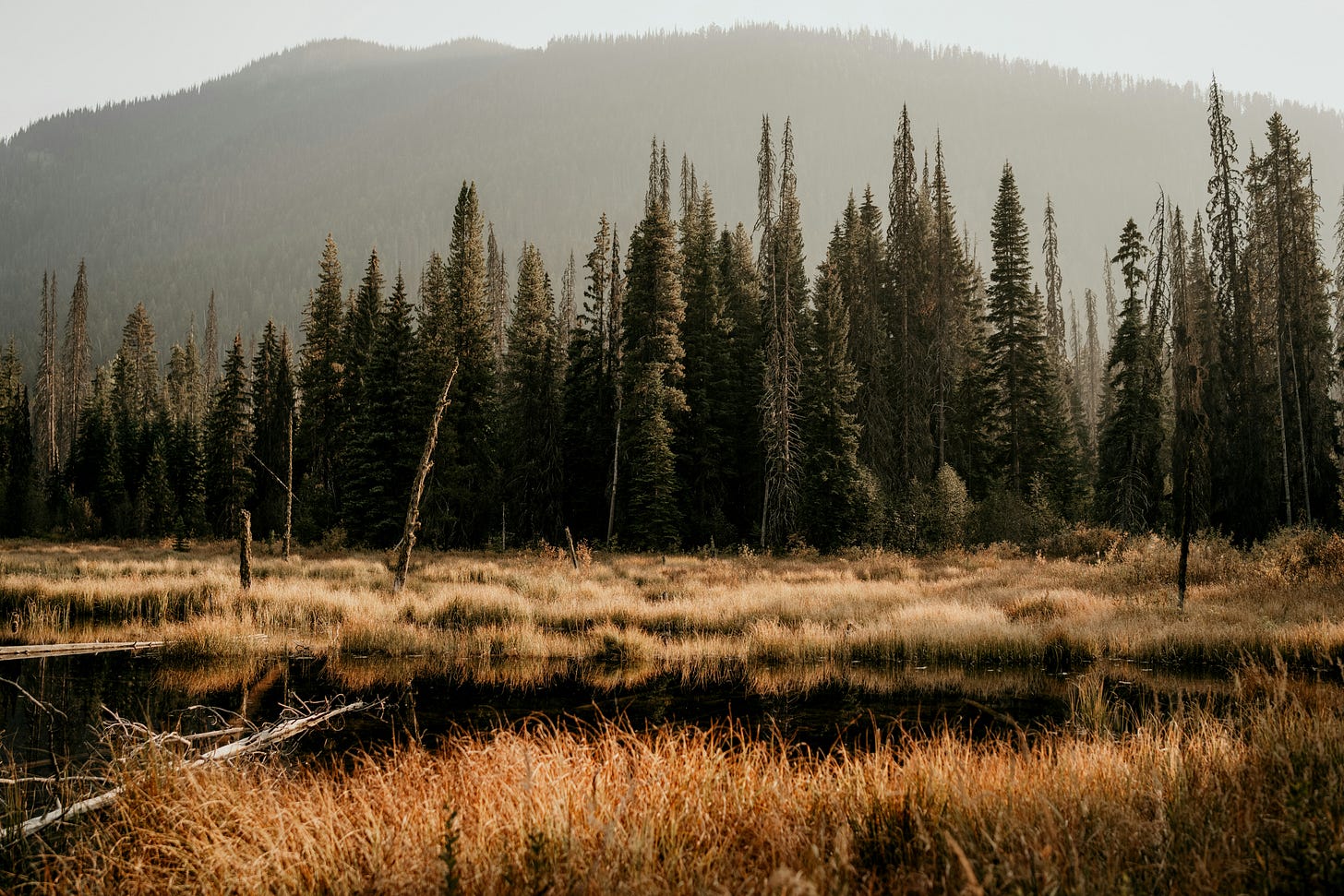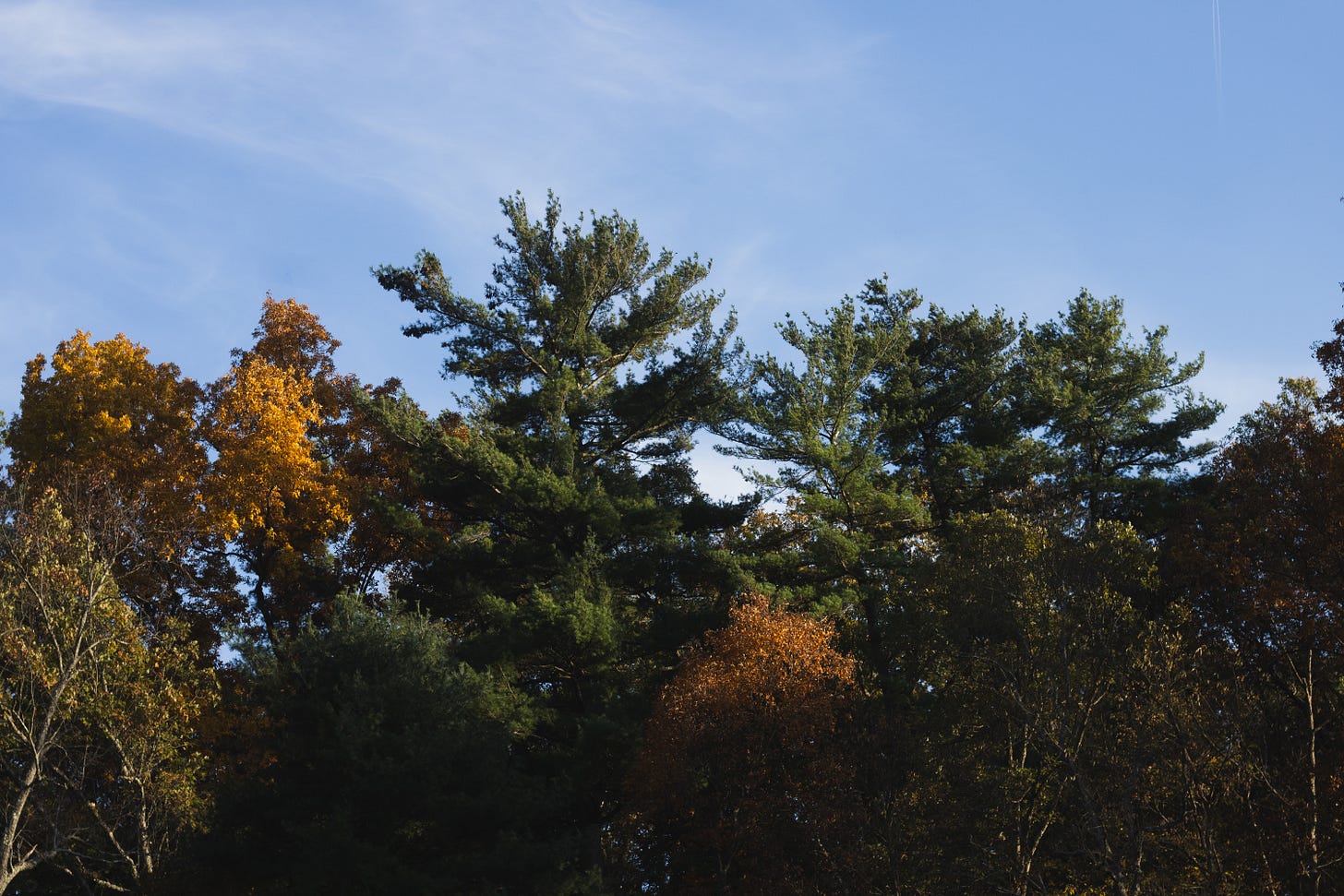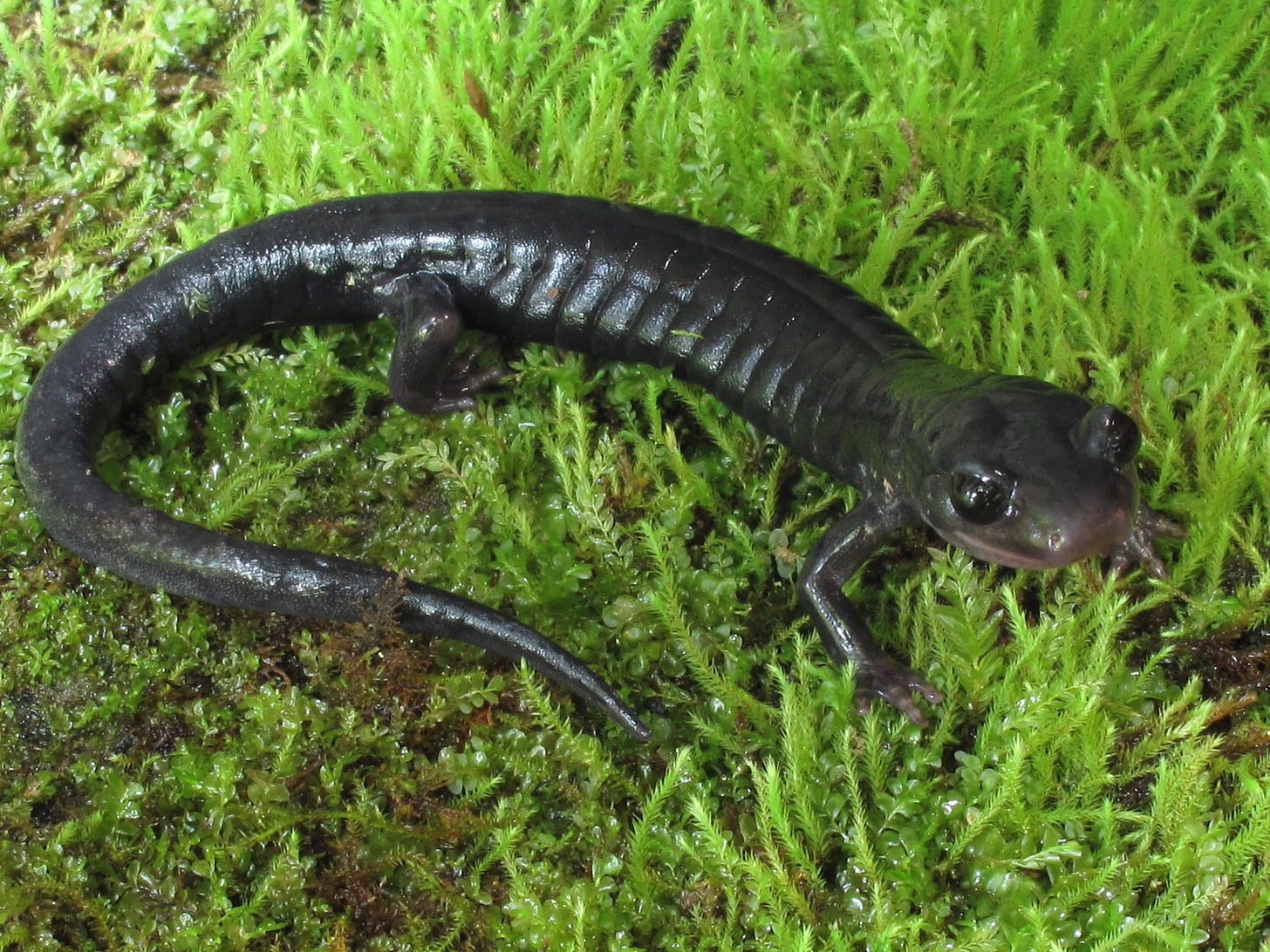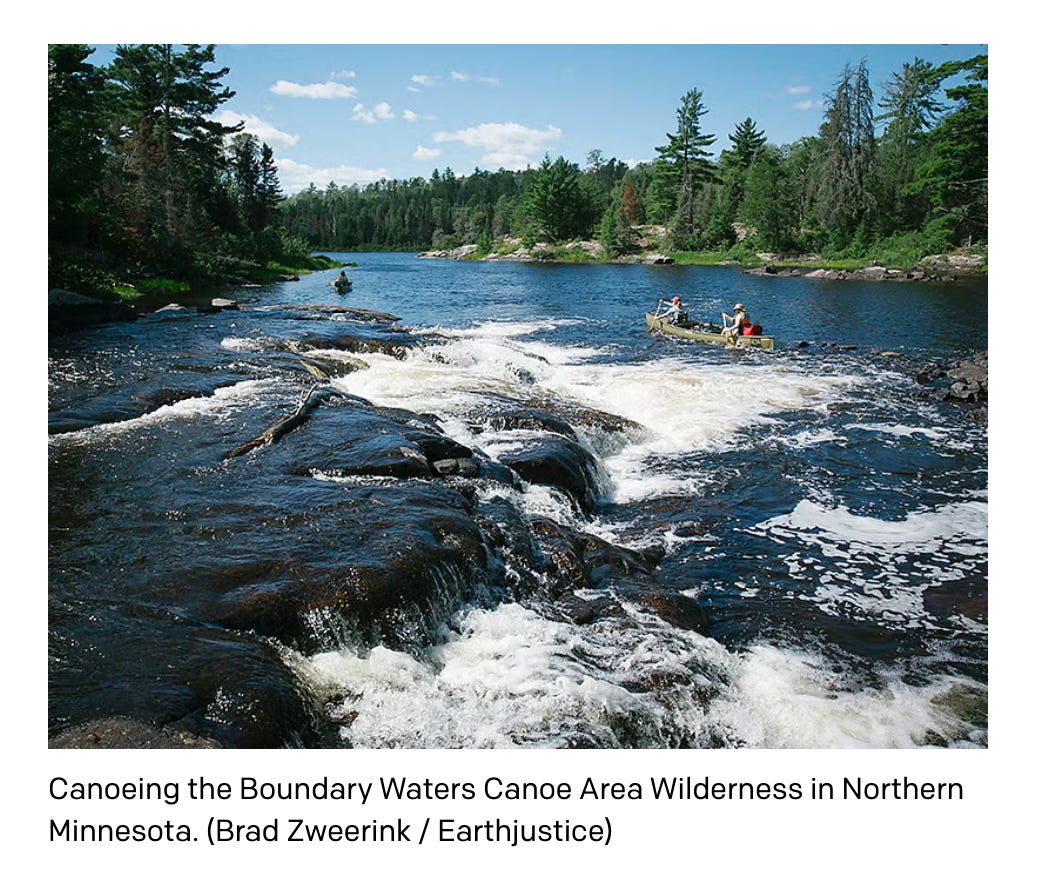The Eco-Update #20
Dispatches from the planet.
In This Issue
Ecological Displacement in British Columbia
Salamander Ecophysiology and Extinction
Eocologizing Society Book Release
Other Eco-Stories In The News
Eco-Fiction Review: ECO24 from Apex and Violet Lichen Books
Something You Can Do: Save Boundary Waters from mining pollution
Ecological Displacement in British Columbia

By Ben Lockwood
British Columbia is known for it’s mountainous and forested landscapes. The region is home several species of megafauna, including moose, deer, wolves, and endangered mountain caribou. It’s also the site of intense resource extraction in the forms of mining, forestry, and the petroleum industry. Prioritizing wildlife habitat while allowing for the continued extraction of resources presents a contradiction for the B.C. government.
New research published in Antipode examines this tension in detail. Ongoing timber harvesting, mining, and oil infrastructure has fragmented forest habitats in the region. The open spaces created by fragmentation makes mountain caribou predation from wolves easier and more successful, putting more pressure on the already endangered caribou population.
To solve this issue, the B.C. government implemented a plan to cull the local grey wolf population. Adriana DiSilvestro, a geographer at the University of Maryland Baltimore County and the author of the new study, characterizes this plan as “ecological displacement”. She argues that the contradiction between conservation and capitalist priorities produces the conditions in which the B.C. government is compelled to manage ecological dynamics, rather than managing resource extraction that are ultimately responsible.
This, DiSilvestro states, is an attempt to reconcile the inherent tension between liberal democracy and capitalist industry. Politically, the B.C. government is obligated to sustain the mountain caribou population, but this puts it in direct opposition with its own need to facilitate the flow of capital via resource extraction from the environment, even though previous studies suggest scientific consensus that such extraction is the underlying cause of declining caribou numbers.
While recognizing that it is practically impossible to make decisions within this framework that don’t cause harm, DiSilvestro’s work reveals the way that the neoliberal state (in this case, the B.C. government) co-ops ecological relations in order to facilitate extractive capitalism. While the state could limit and reduce extraction, shifting economic activity toward sustainable energy development in the region, it instead opts to devalue the lives of grey wolves by deeming them “out of balance”, here balance referring to the conditions that allow for some minimum ecosystem capacity that doesn’t interfere with capitalist economic activity.
Ultimately, DiSilvestro’s research illuminates the fundamental contradictions between conservation and capitalism. The wolf culling “solution” is emblematic of many conservation strategies implemented by governments that often simply set aside, move, or otherwise protect small amounts of habitat or wildlife, while allowing the overall extraction and destruction to continue unabated.
Salamander Ecophysiology and Extinction
By Ben Lockwood
In eastern North America, salamanders are inconspicuous, but important, parts of the forest ecosystem. These amphibians often hide underground, but as both predators and prey, they play a crucial role in the flow of energy and nutrients on the forest floor. In fact, salamanders are so vital to these processes that they are often used as bio-indicator species for monitoring the forest as a whole, and their total biomass is among the highest of all forest species.
Salamanders are ectotherms (or “cold-blooded”) meaning they rely primarily on environmental conditions to control their body temperatures. An interesting new study examined how the southern gray-cheeked salamander regulates its internal metabolism at different temperatures, seasonal times, and elevations. What they found was surprising.
The authors of the study expected that these salamanders, like most ectotherms, would suppress their metabolism during the winter in order to reduce energy use and enter a state of dormancy. Instead, they observed the opposite. Salamanders actually increased their metabolic rate at cold winter temperatures, even though other physiological evidence suggested that the organisms were in a state of dormancy. They found similar patterns among salamanders at high elevations, suggesting that this type of metabolic regulation is a common tactic used to maintain stable internal homeostasis at low temperatures.
The authors state that if these unexpected metabolic strategies are common, they may often be unaccounted for in models that predict species distributions in response to climate change. When the researchers incorporated their findings on salamander metabolism into these models, they found that future warming could contribute to as much as a 77% reduction in the species’ range, which would be a dramatic increase in local extinction compared to current estimates.
While the work has not yet been peer-reviewed, the results are troubling nevertheless. Many ectothermic species could be at greater extinction risk if these metabolic patterns are under-accounted for. The authors of the study stress that winter physiology could be “an underappreciated axis of climate vulnerability”, and that making accurate predictions of species responses to climate change will require the integration of seasonal metabolic regulation.
Ecologizing Society Book Release!
Today is the day! Ecologizing Society is now available for order from Amazon in both print and ebook format. It will also be available from Bookshop in the coming weeks. But there’s even more good news. New paid subscribers to Brief Ecology will get a free ebook copy via email. Oh, and to celebrate the release, subscriptions are currently 40% off!
Other Eco-Stories in the News
Grist: Fossil fuel companies say they support the energy transition. New numbers suggest otherwise.
The Guardian: Oil firm TotalEnergies made misleading green statements, court rules
The Tyee: How Can Canada Help Workers Through a Green Transition?
Eco-fiction Review: ECO24 from Apex and Violet Lichen Books
By Ben Lockwood
I recently read Violet Lichen Books’s upcoming eco-fiction anthology, ECO24. The book is a collection of some of the best eco-fiction published in 2024 from both well-known and new short fiction writers, and there’s a lot of good writing here.
The anthology features a wide variety of subgenres, from climate dystopias, haunted landscapes, hopeful futures, eco and body horror, and eco-magic. The diversity of stories reflects the diversity of the authors and also showcases the indefinable quality of eco-fiction.
One piece that stuck with me was K-Ming Chang’s Ama’s Jungle, originally published in Orion Magazine. Chang’s eco-feminism rails against the pre-determined expectations of women, offering nature as both an escape and a form of resistance. Along similar lines, Guillermo G. Mendoza’s One With the Ground, originally published in Reckoning Magazine, blends eco-magic with resistance to capitalist and colonial land-grabbing.
Another notable piece was Hiron Ennes’s Our Best Selves, published in Weird Horror Magazine. More weird than horror, this fascinating story mixes elements of body horror with eco-strangeness to explore issues of the home and family.
Perhaps my favorite piece in the anthology was Renan Bernardo’s The Plasticity of Being, from Reactor Magazine. It brilliantly depicts the impacts of capitalist pollution and how this system co-ops people into contributing to the problem when trying to fix it.
There’s many more stories worth reading here. Kay Vaindal’s Pig House and Matthew Freeman’s Birdseed are both great and thought-provoking. As a whole, the collection challenges our definitions of nature and forces the reader to consider different perspectives. ECO24 releases on November 18th. Do yourself a favor and pick up a copy when it drops.
Something you can do: Save Boundary Waters from mining pollution
From EarthJustice:
Your voice is needed! We still have a chance to save the Boundary Waters now and for future generations. Tell the Interior Department that you support the mining ban that protects the Boundary Waters.








Excellent roundup! The TotalEnergies greenwashing ruling you mentioned is a significant precedent - it's one of many examples showing how the energy transition narrative often masks business-as-usual fossil fuel expansion. The salamander metabolism study is fascinatin - the idea that winter metabolic increases could lead to 77% range reduction with warming is alarming and shows how much we may be underestimating climate vulnerability. I appreciate how your coverage connects these isolated stories to broader themes about capitalist contradictions in conservation. Looking forward to reading Ecologizing Society!
Raised in Hawaii, but living in SoCalifornia, I've always dreamed of visiting B.C., even pestering my husband to obtain a copy of his father's birth certificate in Vancouver.
The last 5 years of your suffering through fire, flood, and mining pollution has devastated me too.
I'll keep on solar cooking and tending my own short trees as I can.